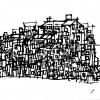What’s the end game?
-
Recently Browsing 0 members
- No registered users viewing this page.
-
Similar Content
-
- 6,629 replies
- 278,483 views
-
- 3,958 replies
- 163,511 views
-
- 54 replies
- 2,223 views
-
- 5 replies
- 434 views
-
- 13 replies
- 3,233 views
-




Recommended Posts
Join the conversation
You can post now and register later. If you have an account, sign in now to post with your account.
Note: Your post will require moderator approval before it will be visible.